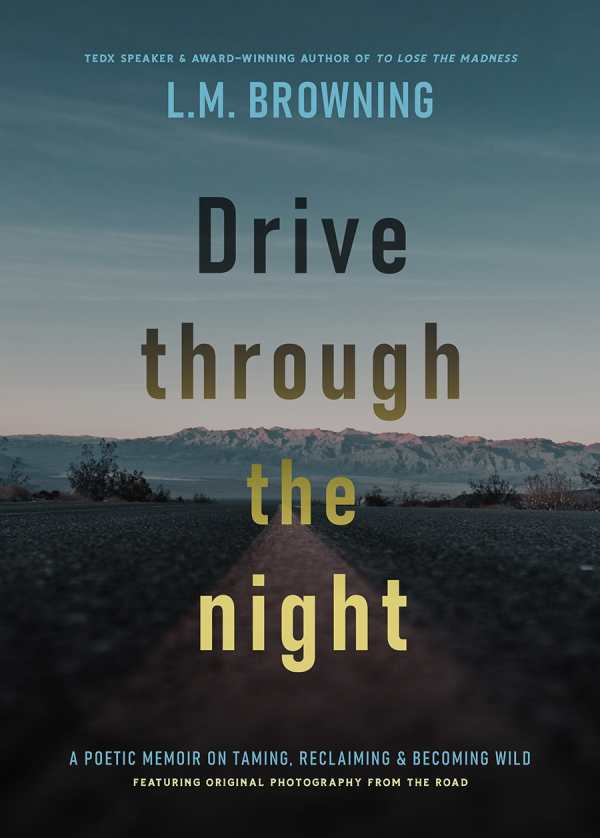Drive through the Night
A Poetic Memoir on Taming, Reclaiming & Becoming Wild
In her lyrical memoir, L. M. Browning “shatters the window of the white picket dream,” making her way West to reclaim herself. Moody black-and-white photographs accompany the book’s poems, adding resonance to claims of freedom or the bonds of domesticity. Browning shares her evolution from “Mrs. Dalloway, / throwing parties to cover the silence” to a woman who has “learned to let the water flow / but not drown.”
The book begins with a note that lays out its scope and structure, detailing Browning’s troubled past. “The Taming” chronicles her growing discomfort in the life conscripted by society, her destructive relationship with a woman, and a devastating event that resulted in pregnancy. The photographs here highlight more domestic pleasures—a door in a sunny room; a glass with ice—though even their landscapes are composed as though they’re constricted by frames. The poems are similarly direct, with clear language and intent, though no less nuanced with their references to the natural world.
“The Breaking” is about miscarrying and spiraling in a mental health facility. After Browning makes it home, her relationship crashes: her partner cannot support her. Wry in acknowledging the pain that they caused each other, the section comes sans pictures, only venturing into interior spaces. Then Browning takes to the road, and the photographs return—of black-and-white vistas, long highways, and canyons. At the same time, the poems take on more music, with more internal rhyme, consonance, and speed. Energy returns to the authentic traveling self. The language calms in the last section: Browning is now her true self, and the photographs, too, focus on ideas of stability, forgiveness, and the self.
In Drive through the Night, L. M. Browning uses poetry and photography to detail her evolution from a socialized prisoner of expectations to a reclaimed, authentic self.
Reviewed by
Camille-Yvette Welsch
Disclosure: This article is not an endorsement, but a review. The publisher of this book provided free copies of the book to have their book reviewed by a professional reviewer. No fee was paid by the publisher for this review. Foreword Reviews only recommends books that we love. Foreword Magazine, Inc. is disclosing this in accordance with the Federal Trade Commission’s 16 CFR, Part 255.

